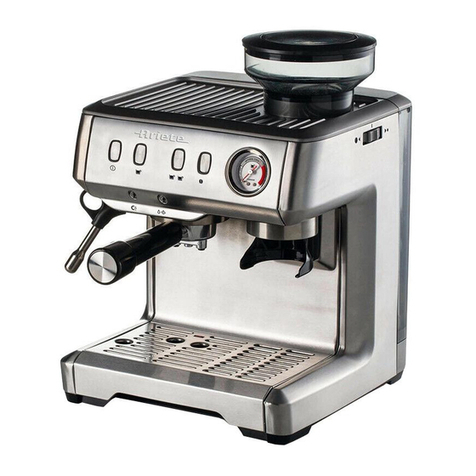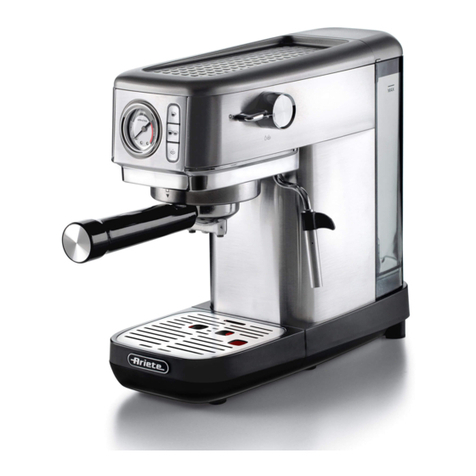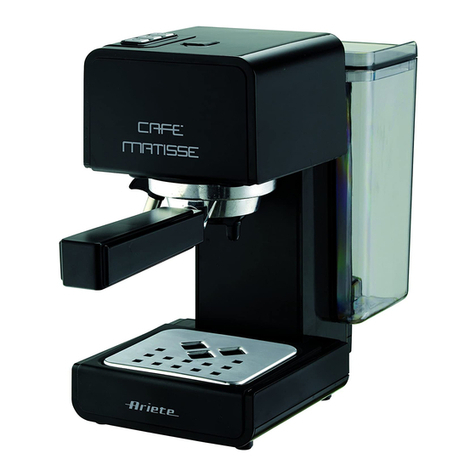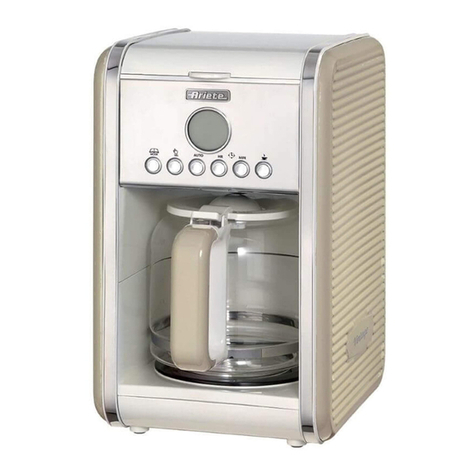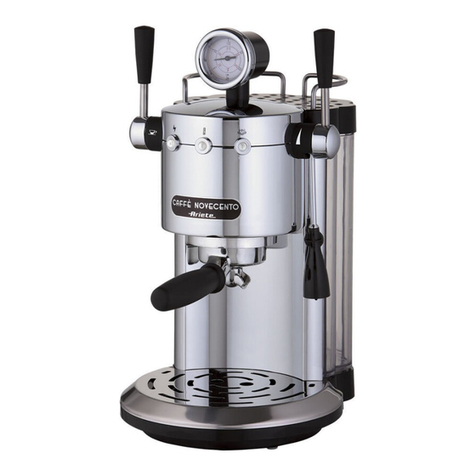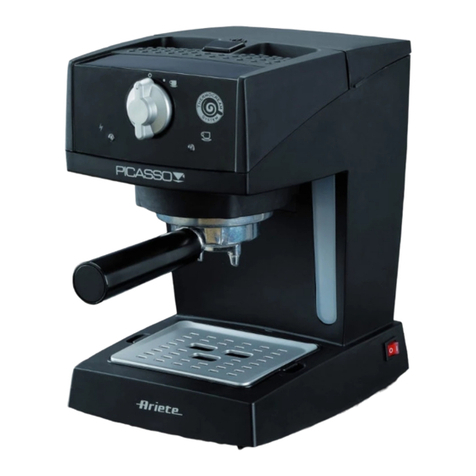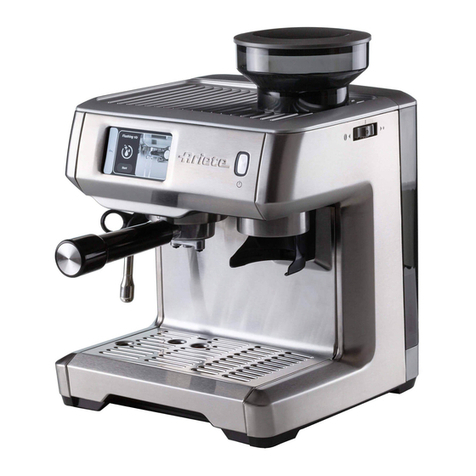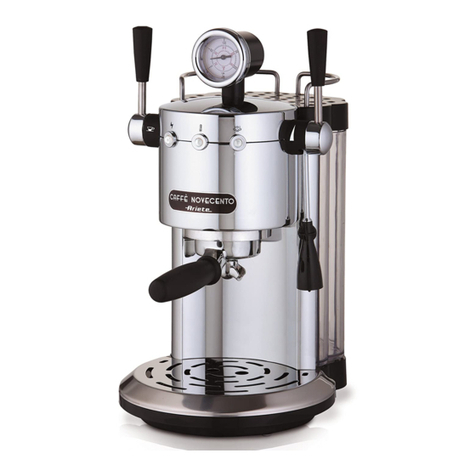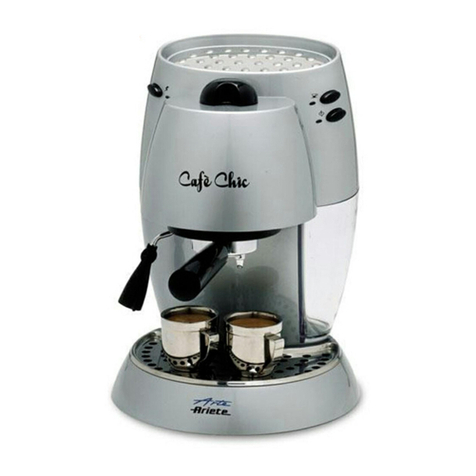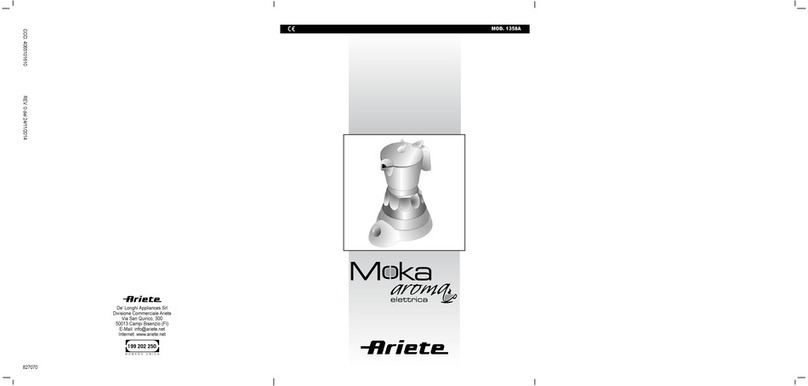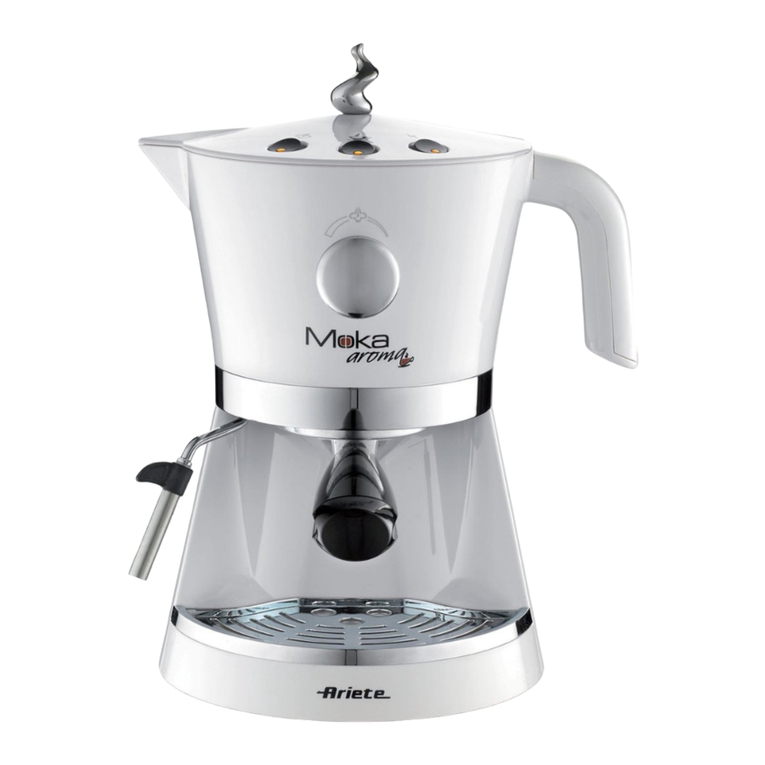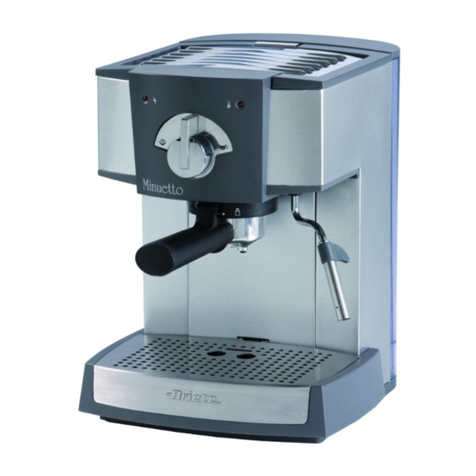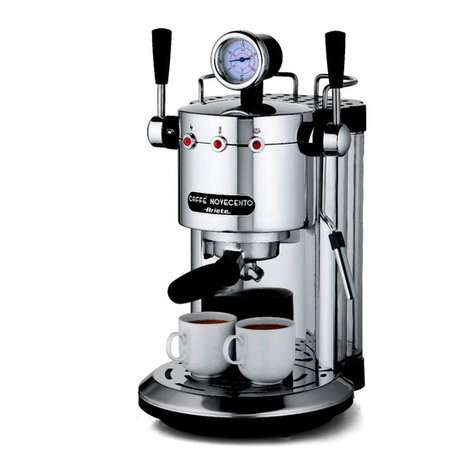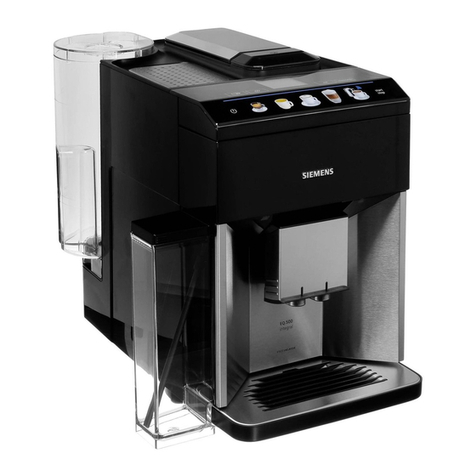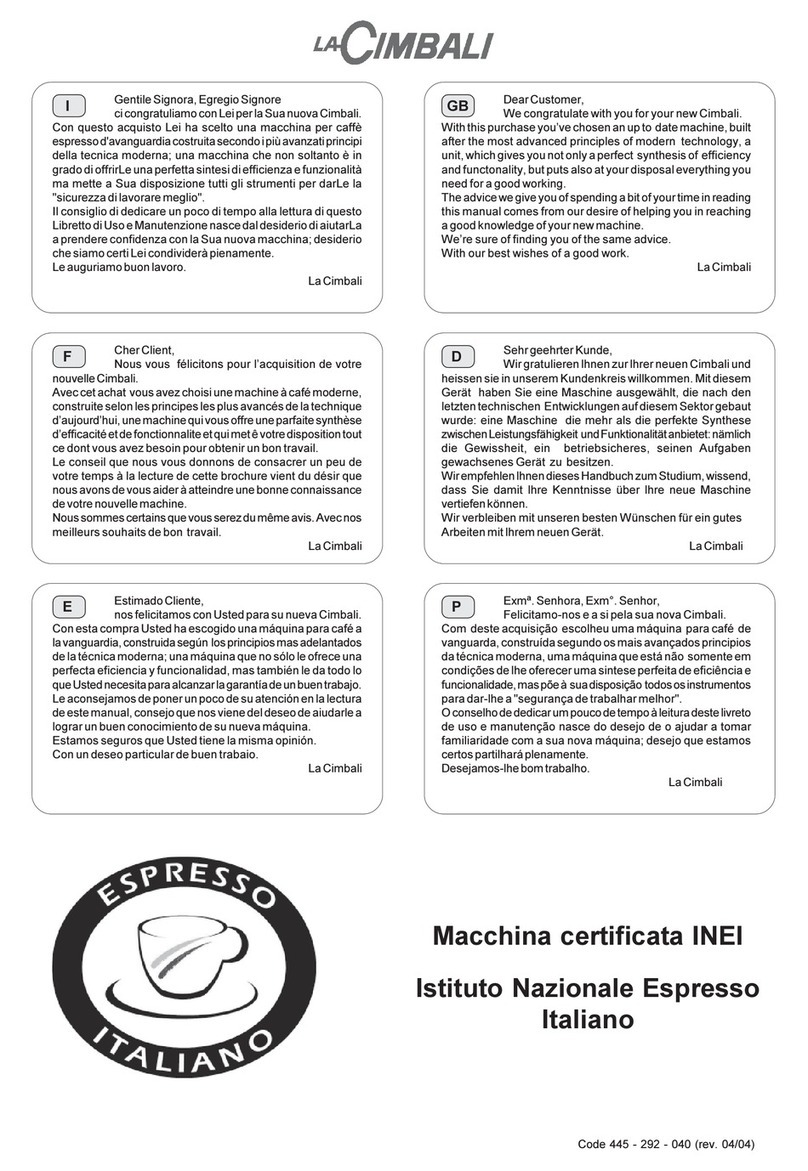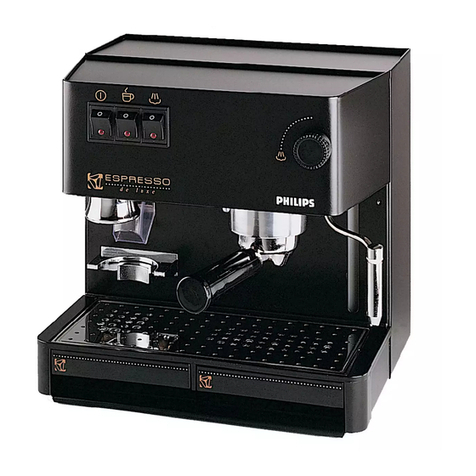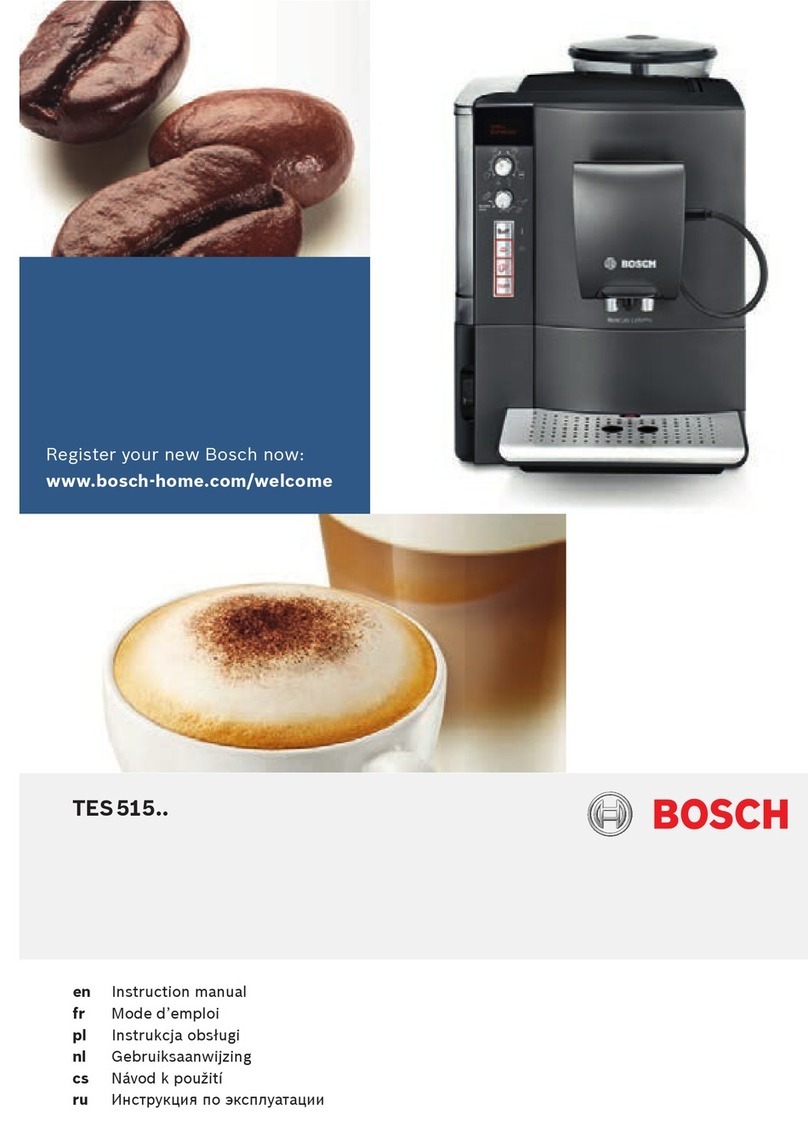1
I
AVVERTENZE IMPORTANTI
•Leggere attentamente le istruzioni prima dell’uso
•Non usare la macchina senza acqua in caldaia.
•Il cavo di alimentazione non deve venire in contatto con superfici calde della macchina.
•Non mettere l’apparecchio sopra o vicino a fonti di calore.
•Togliere la spina dalla presa prima di ogni intervento di pulizia o di manutenzione.
•Prima di collegare l’apparecchio alla rete di alimentazione controllare che la tensione indicata sulla tar-
ghetta posta al di sotto della macchina corrisponda a quella della rete locale.
•L’uso di prolunghe elettriche non autorizzate dal fabbricante dell’apparecchio può pro-
vocare danni e incidenti.
•Non dirigere mai il getto di vapore o acqua calda verso parti del corpo; manipolare con
precauzione il tubo vapore/acqua calda: pericolo ustioni!
•In caso di guasti, difetti o sospetto difetto dopo una caduta, staccare subito la spina dalla presa di cor-
rente. Non mettere mai in funzione l’apparecchio difettoso. LE RIPARAZIONI POSSONO ESSERE
EFFETTUATE ESCLUSIVAMENTE DAI CENTRI DI ASSISTENZA AUTORIZZATI. Si declina ogni
responsabilità per eventuali danni provocati da interventi di riparazione eseguiti in modo non corretto.
• Non lasciare la macchina a temperatura ambiente inferiore a 0°C, in quanto, il residuo d’acqua nella cal-
daia potrebbe ghiacciare e provocare dei danni.
•Non lasciare l’apparecchio esposto ad agenti atmosferici (pioggia, sole, ecc...).
•Gli elementi dell’imballaggio non devono essere lasciati alla portata dei bambini in quanto potenziali
fonti di pericolo.
• Prima di procedere all’operazione di riempimento della caldaia, scollegare l’apparecchio dalla presa di
corrente.
• L’apparecchio è destinato solo ad uso domestico e non deve essere adibito ad uso commerciale o indu-
striale.
• Non lasciare mai la macchina in funzione alla portata dei bambini o incapaci.
• Se il cavo di alimentazione è danneggiato, esso deve essere sostituito dal costruttore o
dal suo servizio Assistenza Tecnica o comunque da una persona con qualifica similare in
modo da prevenire ogni rischio.
• Non toccare l’aggancio del portafiltro e la lancia di vapore quando l’apparecchio è in fun-
zione, in quanto potrebbero causare delle scottature.
•Non utilizzare acqua gassata (addizionata con anidride carbonica).
•Dopo aver ovviamente staccato la spina di alimentazione e dopo che le parti calde si saranno freddate,
l’apparecchio dovrà essere pulito esclusivamente con un panno non abrasivo appena inumidito, aggiun-
gendo poche gocce di detergenti neutri non aggressivi (non usare mai solventi che danneggiano la ver-
niciatura); NON IMMERGE RE L’APPARECCHIO IN ACQUA O ALTRI LIQUIDI.
• Questo apparecchio è conforme alla direttiva 89/336 CEE relativa alla compatibilità elettromagnetica.
•Allorché si decida di smaltire come rifiuto questo apparecchio, si raccomanda di renderlo inop erante
tagliandone il cavo di alimentazione. Si raccomanda inoltre di rendere inno cue quelle parti dell'appa-
recchio suscettibili di costi tuire un pericolo, specialmente per i bambini che potrebbero servirsi del-
